Ideal gas law Equation of state In

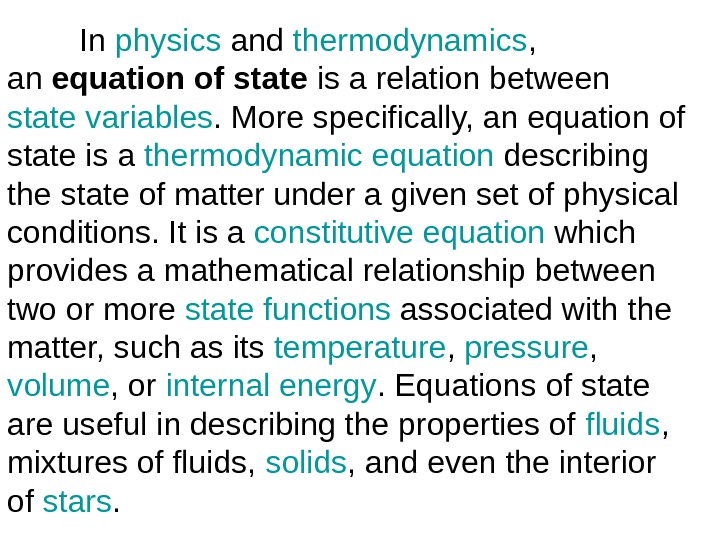
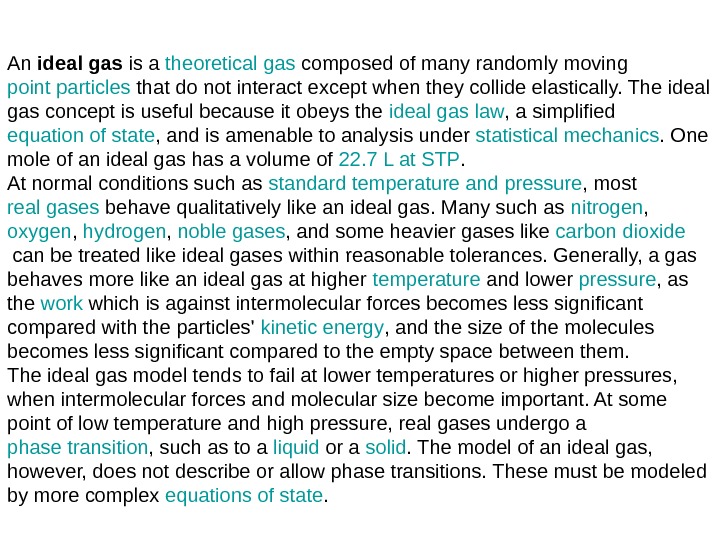
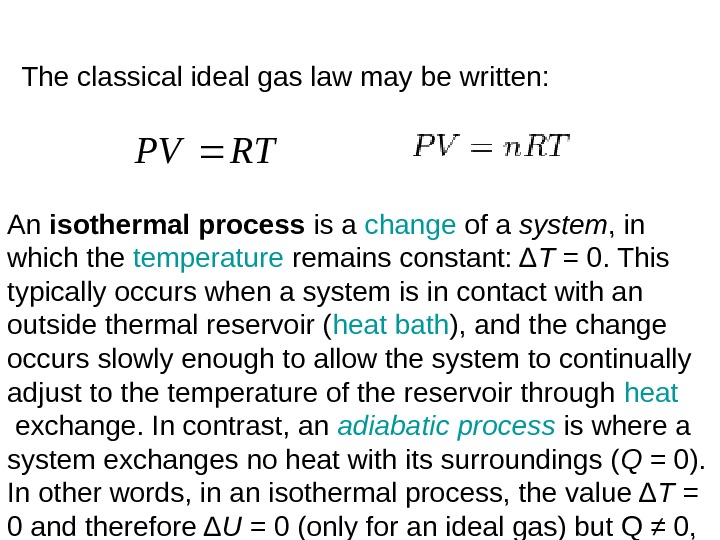
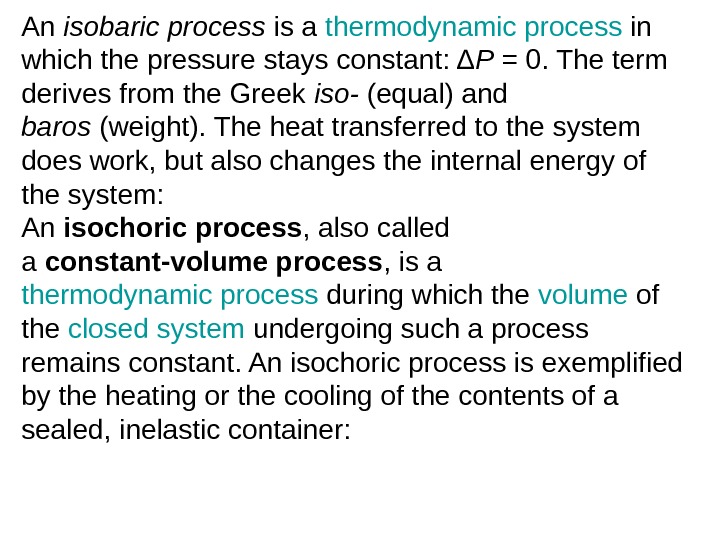
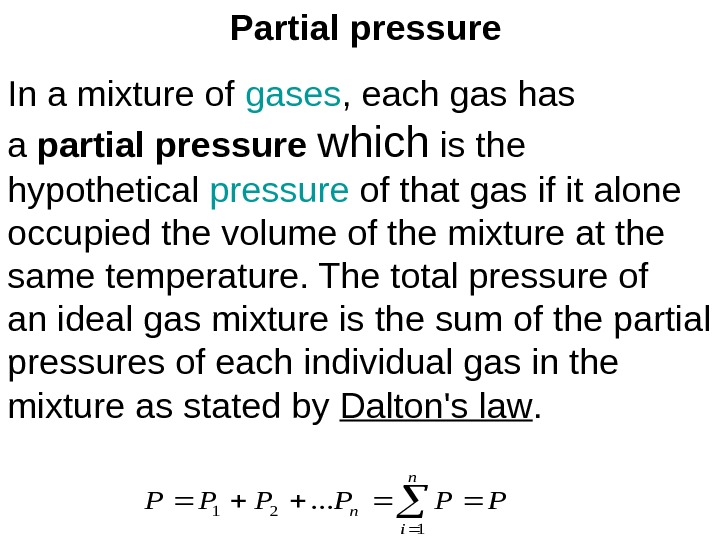
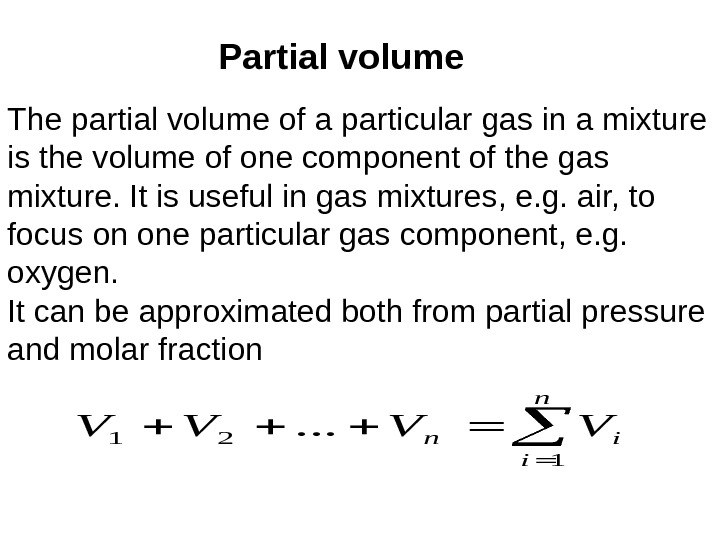
- Размер: 56 Кб
- Количество слайдов: 7
Описание презентации Ideal gas law Equation of state In по слайдам
 Ideal gas law Equation of state
Ideal gas law Equation of state
 In physics and thermodynamics , an equation of state is a relation between state variables. More specifically, an equation of state is a thermodynamic equation describing the state of matter under a given set of physical conditions. It is a constitutive equation which provides a mathematical relationship between two or more state functions associated with the matter, such as its temperature , pressure , volume , or internal energy. Equations of state are useful in describing the properties of fluids , mixtures of fluids, solids , and even the interior of stars.
In physics and thermodynamics , an equation of state is a relation between state variables. More specifically, an equation of state is a thermodynamic equation describing the state of matter under a given set of physical conditions. It is a constitutive equation which provides a mathematical relationship between two or more state functions associated with the matter, such as its temperature , pressure , volume , or internal energy. Equations of state are useful in describing the properties of fluids , mixtures of fluids, solids , and even the interior of stars.
 An ideal gas is a theoretical gas composed of many randomly moving point particles that do not interact except when they collide elastically. The ideal gas concept is useful because it obeys the ideal gas law , a simplified equation of state , and is amenable to analysis under statistical mechanics. One mole of an ideal gas has a volume of 22. 7 L at STP. At normal conditions such as standard temperature and pressure , most real gases behave qualitatively like an ideal gas. Many such as nitrogen , oxygen , hydrogen , noble gases , and some heavier gases like carbon dioxide can be treated like ideal gases within reasonable tolerances. Generally, a gas behaves more like an ideal gas at higher temperature and lower pressure , as the work which is against intermolecular forces becomes less significant compared with the particles’ kinetic energy , and the size of the molecules becomes less significant compared to the empty space between them. The ideal gas model tends to fail at lower temperatures or higher pressures, when intermolecular forces and molecular size become important. At some point of low temperature and high pressure, real gases undergo a phase transition , such as to a liquid or a solid. The model of an ideal gas, however, does not describe or allow phase transitions. These must be modeled by more complex equations of state.
An ideal gas is a theoretical gas composed of many randomly moving point particles that do not interact except when they collide elastically. The ideal gas concept is useful because it obeys the ideal gas law , a simplified equation of state , and is amenable to analysis under statistical mechanics. One mole of an ideal gas has a volume of 22. 7 L at STP. At normal conditions such as standard temperature and pressure , most real gases behave qualitatively like an ideal gas. Many such as nitrogen , oxygen , hydrogen , noble gases , and some heavier gases like carbon dioxide can be treated like ideal gases within reasonable tolerances. Generally, a gas behaves more like an ideal gas at higher temperature and lower pressure , as the work which is against intermolecular forces becomes less significant compared with the particles’ kinetic energy , and the size of the molecules becomes less significant compared to the empty space between them. The ideal gas model tends to fail at lower temperatures or higher pressures, when intermolecular forces and molecular size become important. At some point of low temperature and high pressure, real gases undergo a phase transition , such as to a liquid or a solid. The model of an ideal gas, however, does not describe or allow phase transitions. These must be modeled by more complex equations of state.
 The classical ideal gas law may be written: An isothermal process is a change of a system , in which the temperature remains constant: Δ T = 0. This typically occurs when a system is in contact with an outside thermal reservoir ( heat bath ), and the change occurs slowly enough to allow the system to continually adjust to the temperature of the reservoir through heat exchange. In contrast, an adiabatic process is where a system exchanges no heat with its surroundings ( Q = 0). In other words, in an isothermal process, the value Δ T = 0 and therefore Δ U = 0 (only for an ideal gas) but Q ≠ 0, while in an adiabatic process, Δ T ≠ 0 but Q = 0. RTPV
The classical ideal gas law may be written: An isothermal process is a change of a system , in which the temperature remains constant: Δ T = 0. This typically occurs when a system is in contact with an outside thermal reservoir ( heat bath ), and the change occurs slowly enough to allow the system to continually adjust to the temperature of the reservoir through heat exchange. In contrast, an adiabatic process is where a system exchanges no heat with its surroundings ( Q = 0). In other words, in an isothermal process, the value Δ T = 0 and therefore Δ U = 0 (only for an ideal gas) but Q ≠ 0, while in an adiabatic process, Δ T ≠ 0 but Q = 0. RTPV
 An isobaric process is a thermodynamic process in which the pressure stays constant: Δ P = 0. The term derives from the Greek iso- (equal) and baros (weight). The heat transferred to the system does work, but also changes the internal energy of the system: An isochoric process , also called a constant-volume process , is a thermodynamic process during which the volume of the closed system undergoing such a process remains constant. An isochoric process is exemplified by the heating or the cooling of the contents of a sealed, inelastic container:
An isobaric process is a thermodynamic process in which the pressure stays constant: Δ P = 0. The term derives from the Greek iso- (equal) and baros (weight). The heat transferred to the system does work, but also changes the internal energy of the system: An isochoric process , also called a constant-volume process , is a thermodynamic process during which the volume of the closed system undergoing such a process remains constant. An isochoric process is exemplified by the heating or the cooling of the contents of a sealed, inelastic container:
 Partial pressure In a mixture of gases , each gas has a partial pressure which is the hypothetical pressure of that gas if it alone occupied the volume of the mixture at the same temperature. The total pressure of an ideal gas mixture is the sum of the partial pressures of each individual gas in the mixture as stated by Dalton’s law. PPPPPP n i n 1 21. . .
Partial pressure In a mixture of gases , each gas has a partial pressure which is the hypothetical pressure of that gas if it alone occupied the volume of the mixture at the same temperature. The total pressure of an ideal gas mixture is the sum of the partial pressures of each individual gas in the mixture as stated by Dalton’s law. PPPPPP n i n 1 21. . .
 Partial volume The partial volume of a particular gas in a mixture is the volume of one component of the gas mixture. It is useful in gas mixtures, e. g. air, to focus on one particular gas component, e. g. oxygen. It can be approximated both from partial pressure and molar fraction n i in. VVVV 1 21. . .
Partial volume The partial volume of a particular gas in a mixture is the volume of one component of the gas mixture. It is useful in gas mixtures, e. g. air, to focus on one particular gas component, e. g. oxygen. It can be approximated both from partial pressure and molar fraction n i in. VVVV 1 21. . .
